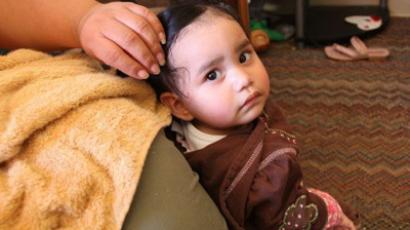Apart block: Manhattan luxury tower to have separate rich/poor entrances

A New York City developer has broken ground on a midtown luxury tower that reportedly plans to separate potential tenants based on their income, going so far as to segregate occupants via drastically different entrances and exits.
Extell, a Manhattan developer, has begun construction on the
glitzy tower, where 55 low-income units will be available, yet
distinctly separate from the 219 market-rate condominiums
overlooking the city’s waterfront.
In exchange for building the low-income apartments, Extell is
seeking millions of dollars in tax breaks from New York
lawmakers, according to the New York Post.
However, unlike other developers seeking the tax exemption, 40
Riverside Boulevard will have five floors facing away from the
Hudson River with a separate entrance, elevator and maintenance
elevator. The 219 condos have a riverside view, a contradiction
the West Side Rag blog compared to the wealth gap at
turn-of-the-20th-century Britain.
“You know that show ‘Downton Abbey’? Where the servants have to
come to and go through separate entrances and bow their heads
when they see a noble?” the author wrote, as quoted by the Post.
“Well, there could soon be a version right here on the Upper
West Side!”
A spokeswoman for the Department of Housing Preservation and
Development said Extell’s tax exemption application is under
review, yet Assemblywoman Linda Rosenthal said the plans “smack
of classism.”
“My immediate reaction was, ‘This is reprehensible,’” she
told MSNBC on Monday. “Why would they do this? What is the
need to segregate low-income working-class people from the
wealthy?”
Rosenthal said her Upper West Side constituents agreed with her
and pressed the Extell to integrate the low-income and
high-income apartments, saying the current place seems to be from
the past.
“That has no place in the 21st century, especially on
the Upper West Side, which is a bastion of progressivism and
always has been…I think that because that has been a public
outcry, the developer will probably come to the table.”
While separate doors may seem like a centuries-old idea, it is
emblematic of the current wealth gap that has only expanded over
recent years in New York City. A New York University study
published earlier this year revealed that median incomes
decreased (by 6.8 percent to $50,433 a year) in the years between
2007 and 2011, while rent prices rose (by a monthly gross of 8.6
percent).
Even more worrisome, one-third of New Yorkers spend at least half
of their annual income on housing.
“Given that two-thirds of New Yorkers rent their homes, it’s
concerning to see that rental housing has become increasingly
expensive across the city and increasingly affordable to many
tenants,” said Ingrid Gould Ellen, the co-director of the
Furman Center, which was involved in the NYU study.
One percent of New Yorkers earned almost 45 percent of the city’s
income in 2007, James Parrott, a Fiscal Policy Institute
economist, told the Post. That one percent, which accounts for
roughly 90,000 people, had an average income of $3.7 million, or
approximately $10,000 a day.
The latter is equivalent to what the city’s poorest one million
households take home in one year.
“New York City has always had extremes of rich and poor,”
Parrott said. “But we haven’t had the extremes we have today.
It’s been getting more extreme all the time. It’s more extreme
now than what it was 10 years ago, or 15 years ago.”














